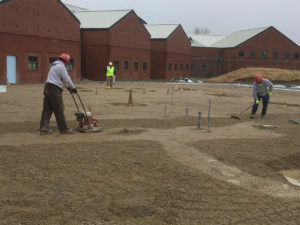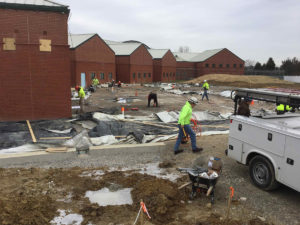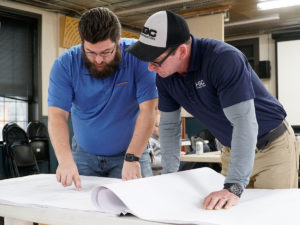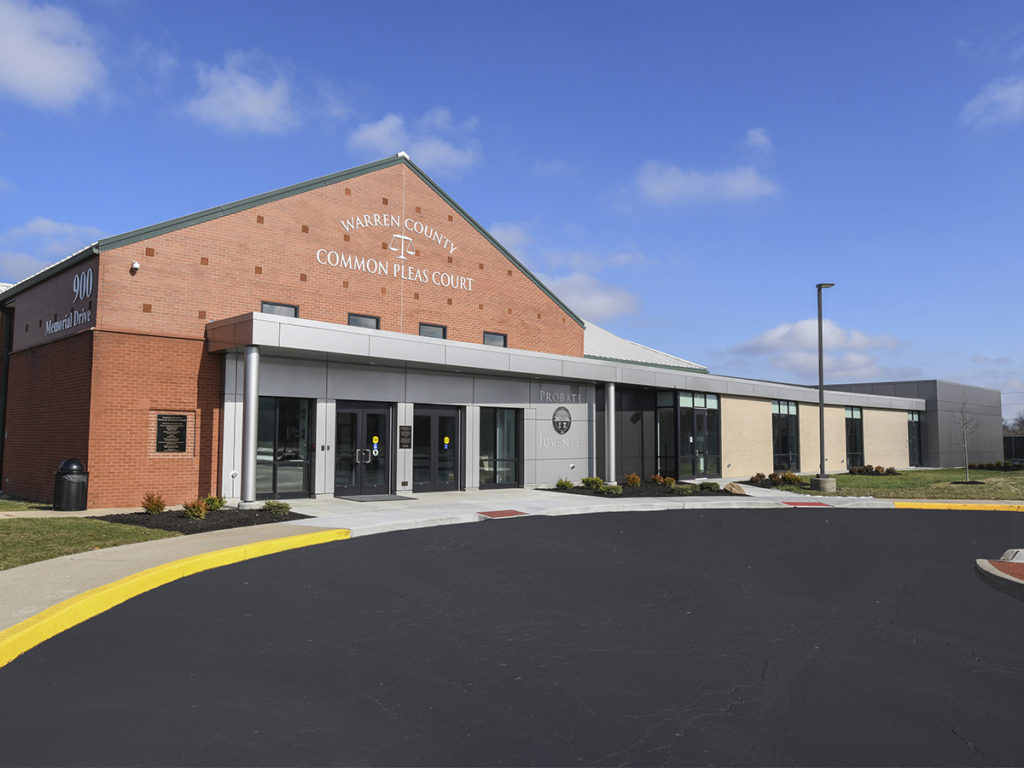 [1]Contributed by Joe Frecker, Project Executive [2]
[1]Contributed by Joe Frecker, Project Executive [2]
Before coming to HGC, I spent years as the Construction Manager for a higher education institution. I quickly learned the value of a contractor who stays on schedule. You can’t prevent students from moving on campus on a scheduled date just because a project falls behind. For this reason, I have been pleased to be part of HGC’s execution of Lean Construction Management and utilization of the Last Planner® System (LPS) of Production Control. [3] My team’s recent success on the renovation and addition to the Warren County Probate-Juvenile Court [4] is a prime example of this best practice approach.
Waste Not, Want Not
The goal of LPS is straightforward: reduce waste. This includes waste of resources, waste of labor, and especially waste of time.
The Warren County project was a design/build expansion. It added approximately 10,600 SF to the center and renovated 5,800 SF of existing building space. Project logistics were complicated because the court facility remained in full operation throughout the entirety of the project. This is why LPS became such a vital asset.
See the completed Warren County Probate-Juvenile Court. [4]
With so many moving pieces, the best way to reduce waste is to reduce miscommunication. This is the purpose of Pull Planning to build a project schedule. The process has two priorities:
- Break a large project into manageable portions
- Identify all “predecessors” or “triggers”—the last activity needed in order to proceed with a new activity.
The key to successful Pull Planning is the Pull Meeting. We bring all stakeholders into one room and create three months’ worth of schedule. Three months is about all you can plan in a one-day meeting. You start at a milestone and work backwards. It is vital to detail every single activity needed by each trade. Only then can you plan how they can overlap and interact in order to reach the milestone on time.
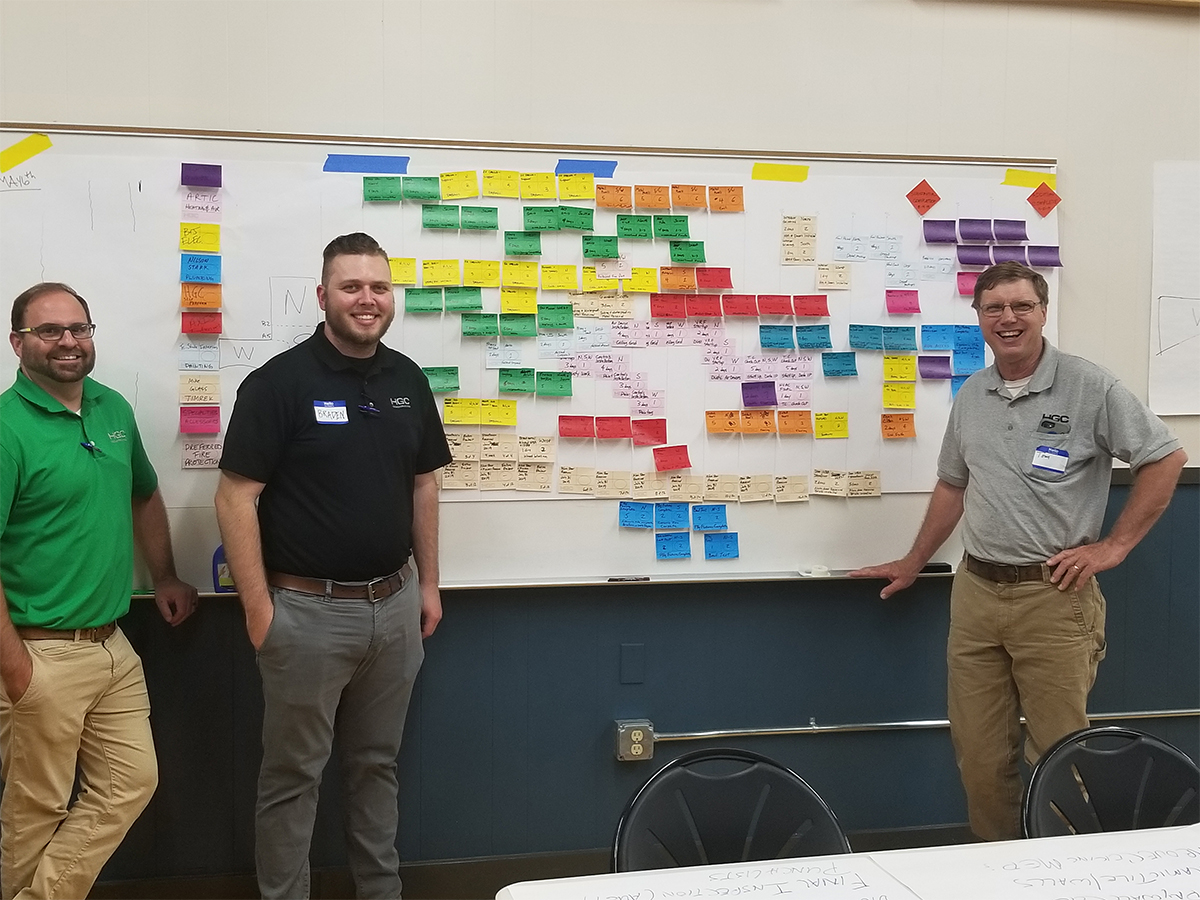 [8]
[8]Owning the Schedule
Some subcontractors are keen on pull planning, and others are not. We find that getting subcontractors on board early starts to build the team spirit that you need on the job. It gives the subcontractors ownership because they were included in the planning.
This sense of accountability was important on the Warren County job. HGC works with some of the most qualified subcontractors in this city. Unfortunately, two Warren County subcontractors still fell behind schedule. Because they felt such accountability to a schedule they had helped create, one subcontractor buckled down and worked weekends in order to catch up.
The second contractor was unable to catch up. Thanks to the constantly updated schedule and open communication, however, we were able to quickly identify the delay. We provided the Client with advanced notice about anticipated changes in the schedule. The Client appreciated the transparency, and felt that the quality of the subcontractor was worth the delay. Not to mention—and perhaps due to the sense of accountability fostered by Pull Planning—the subcontractor performed some additional work at their cost. In the end, the Client knew that HGC had everything under control and was looking out for the best interest of their project.
See what other Clients have had to say about our work. [12]
The Meeting
Having the right people in the Pull Plan meeting is critical. Each trade knows best their activities, their duration, their required labor, and the predecessor needed to begin work. Missing just one piece of this puzzle can build a flawed schedule with potential for delay. Sometimes, even with the right people in the room, you can’t solve the whole puzzle in one day. That can be frustrating. But you always leave the meeting assigning each person specific information to gather with a set deadline.
The Pull Planning process is incredible to watch. At HGC we use custom-designed color coded sticky notes. Each note contains five key pieces information on it, and they are aligned on a long wall, or dry erase board, or roll of paper. At the end of the session, it’s easy to see how the schedule will be built. Once all activities are aligned as tightly as possible from right to left, the information is “pulled” to build the weekly work plan.
It is important to issue this new, team-built schedule, with the final result of three different schedules: 2 week, 4 week, and 8 week. The 2 week schedule is drastically more detailed than the 8 week. There are clear deadlines and expectations, and everyone is on the same page.
Pull Planning FTW
Our work at Warren County began in November of 2018 [16]. It is never easy to begin a new construction in the beginning of winter. We lost nearly a month due to weather delays. But because Pull Planning builds new schedules around each milestone and constantly refines the schedules, we were able to recover that entire month throughout the duration of the project. We also created efficiencies by finding opportunities to work night shifts or weekends. This prevented stacking trades during the average work day. It also proved to be less disruptive for the Court activities.
Our clients at Warren County Probate-Juvenile Court were completely satisfied with not just the final product, but the entire process. And that is the power of Pull Planning: seamless scheduling with creative collaboration—no waste.
Want to work with a company that encourages best practices? Check out our job opportunities [18] and join a company that builds community, builds relationships, and builds each other. Join HGC and Build Every Day.



